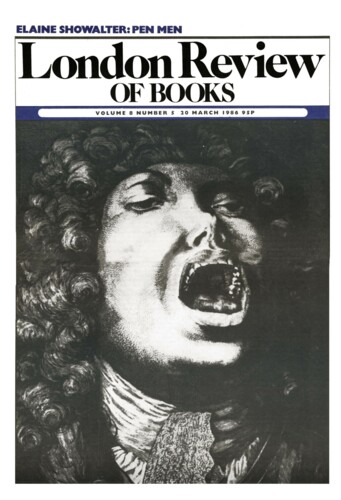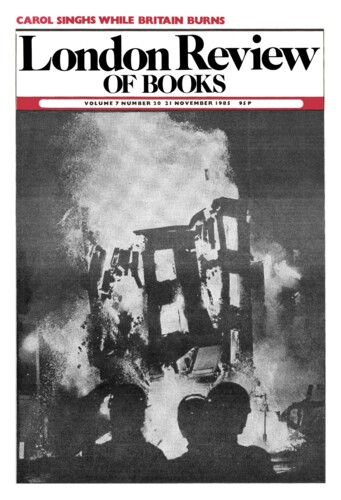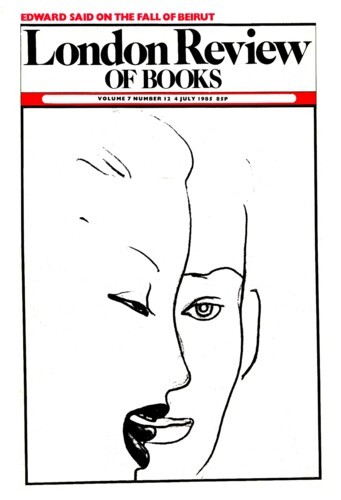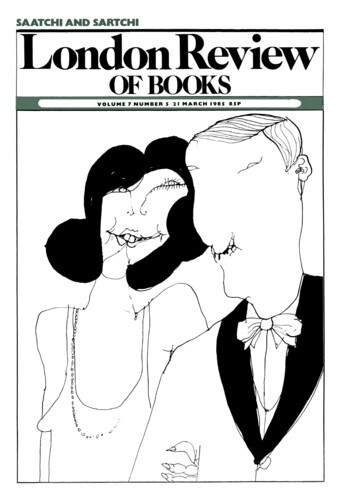Geraniums and the River
Nicholas Penny, 20 March 1986
‘Impressionism became very quickly the house style of the haute-bourgeoisie,’ T.J. Clark observes at the close of The Painting of Modern Life. Few seem to have resisted the invitations of Madame Verdurin or to have hesitated to adopt the pseudo-Rococo frame with whitened gilding. Renoir, in particular, who had begun his career decorating porcelain, ended it providing upper-class wall-ornaments. Clark perhaps has him chiefly in mind when he sternly (but cryptically) declares that there are ‘ways’ in which the ‘dissolution’ of Impressionism ‘into the decor of Palm Springs and Park Avenue is well deserved’. The paintings upon which he prefers to concentrate his attention and which seem to win his approval are by Monet, Degas, Seurat and Manet – especially those works by Manet which puzzled or offended.’




